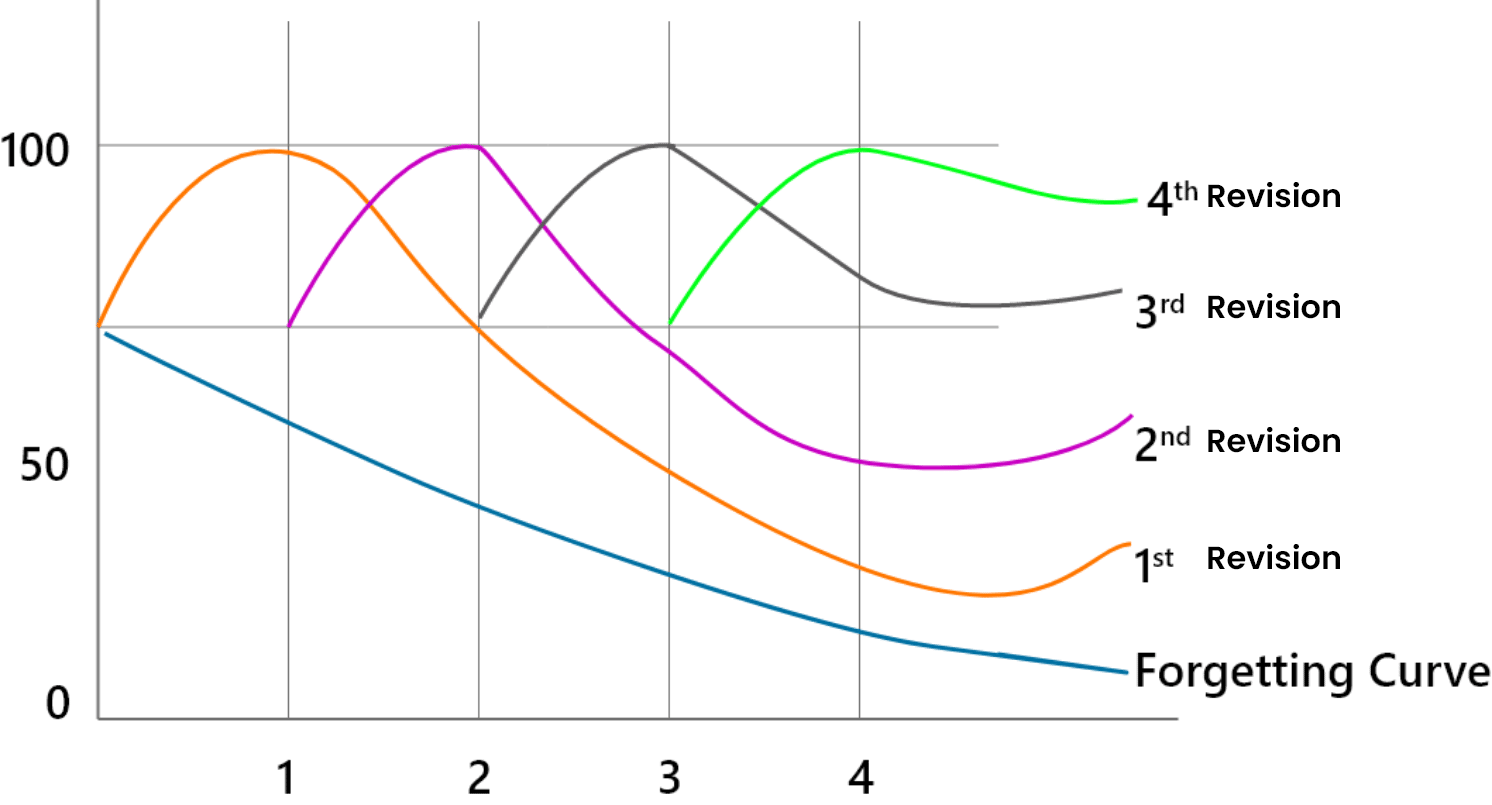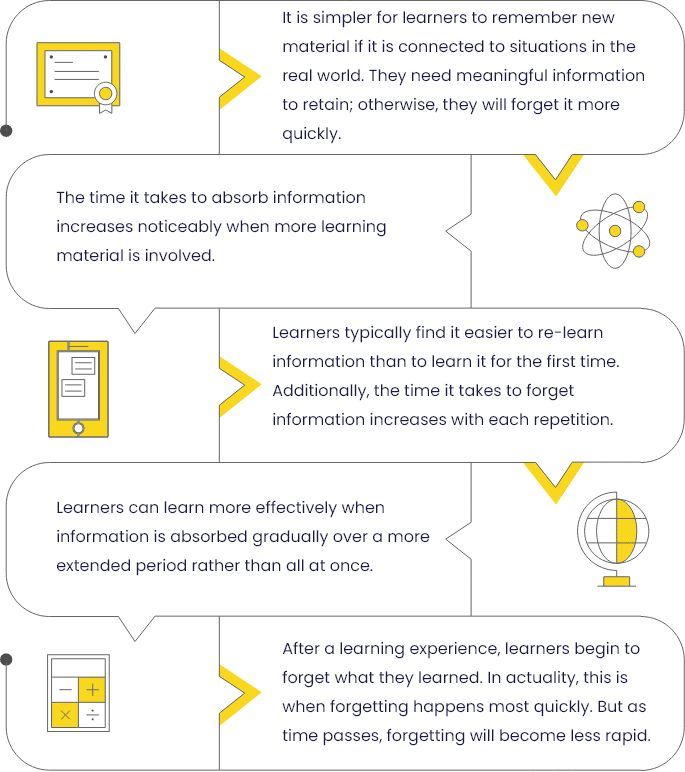Ebbinghaus Forgetting Curve
You may have spent countless hours developing content and designing eLearning courses, but it won’t matter if your learners can’t retain what they’ve learned. This is a challenge for L&D pros. The forgetting curve shows how memory declines over time when not used. You must understand the forgetting curve and its impactful tactics to overcome this challenge. This article explains the forgetting curve psychology so your learners can achieve their goals.
What Is the Forgetting Curve?
Hermann Ebbinghaus developed the forgetting curve as a mathematical formula in 1885. It demonstrates how quickly knowledge is lost over time if we don’t make an effort to keep it. According to some studies, humans tend to forget about 50% of new information an hour after learning it. Within 24 hours, that rises to an average of 70%.
The forgetting curve shows how memory retention decreases over time and how information is lost when no effort is made to retain it. In a matter of days or weeks, people tend to forget half of the information they’ve just learned unless they consciously review it, according to a typical forgetting curve graph. The forgetting curve supports transience, one of the seven types of memory failures, which is the forgetting process that happens over time.
The eLearning Forgetting Curve
The brain can perform the most difficult tasks, store enormous amounts of data, and is the most powerful source of memory that acts as a knowledge bank. However, the weak link of the brain is none other than memory retention.
Simply put, the forgetting curve makes it possible for what we learn to not stick in our minds. Because memory overload prevents us from assimilating and retaining information for later use, even the most effective eLearning experiences will be ineffective.
According to Ebbinghaus’ forgetting curve research, the most significant drop in retention occurs almost immediately after learning new information. Therefore, Ebbinghaus said the best way to beat the forgetting curve is to instantly and frequently apply new knowledge and follow learning reinforcement periodically.
This triggers long-term memory storage in the brain. As a trainer, there are other effective ways to improve retention and combat the forgetting curve, which you will see in the later sections of this article.
The Forgetting Curve: Combating It
Training frequently involves both parties. The training managers are also on a discovery journey to find a training solution that benefits their learners. Knowledge is power, as with so many other things. We can take action now that we understand how memory functions! Here are 4 strategies you can use in your training programs to better use spaced repetition.
Final Thoughts
According to the forgetting curve, keep lessons brief and offer follow-up learning to avoid memory overload. Disseminating learning takes time. Instead of holding one long online training session yearly, have several shorter ones. This prevents cognitive overload and helps learners digest and retain information.
Any eLearning course or online training event aims to teach new skills and knowledge. Using the forgetting curve in eLearning design and development, you can create memorable and effective eLearning experiences that your audience won’t forget.
















